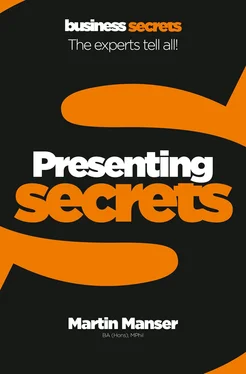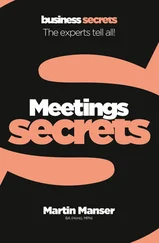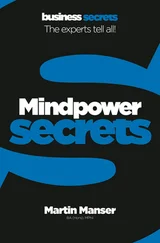Martin Manser - Presenting
Здесь есть возможность читать онлайн «Martin Manser - Presenting» — ознакомительный отрывок электронной книги совершенно бесплатно, а после прочтения отрывка купить полную версию. В некоторых случаях можно слушать аудио, скачать через торрент в формате fb2 и присутствует краткое содержание. Жанр: unrecognised, на английском языке. Описание произведения, (предисловие) а так же отзывы посетителей доступны на портале библиотеки ЛибКат.
- Название:Presenting
- Автор:
- Жанр:
- Год:неизвестен
- ISBN:нет данных
- Рейтинг книги:3 / 5. Голосов: 1
-
Избранное:Добавить в избранное
- Отзывы:
-
Ваша оценка:
- 60
- 1
- 2
- 3
- 4
- 5
Presenting: краткое содержание, описание и аннотация
Предлагаем к чтению аннотацию, описание, краткое содержание или предисловие (зависит от того, что написал сам автор книги «Presenting»). Если вы не нашли необходимую информацию о книге — напишите в комментариях, мы постараемся отыскать её.
Presenting — читать онлайн ознакомительный отрывок
Ниже представлен текст книги, разбитый по страницам. Система сохранения места последней прочитанной страницы, позволяет с удобством читать онлайн бесплатно книгу «Presenting», без необходимости каждый раз заново искать на чём Вы остановились. Поставьте закладку, и сможете в любой момент перейти на страницу, на которой закончили чтение.
Интервал:
Закладка:
Presenting
Secrets
The experts tell all!
Martin Manser
Table of Contents
Cover Page
Title Page Presenting Secrets The experts tell all!
Author's note Author’s note Thank you to Alfred Biehler, Michael and Jeanette Hulcoop, Tim Duffy, Hannah and Brian Murphy.
Learn how to give the perfect presentation Learn how to give the perfect presentation We give presentations to provide information, explain something, present choices, sell a product or service, or persuade others to follow a course of action. Unfortunately, presentations can be dull. But yours doesn’t have to be. I’ve written this book to guide you through every step of the preparation so that your presentation communicates your message effectively and is successful. My natural temperament is to be shy. Being the youngest of four children meant that I was a listener and generally kept my thoughts to myself. Gradually over the years I’ve come out of my shell and had the courage to express myself. Actually, it’s been a long and at times difficult struggle – and at times I’ve wanted to say something in a larger group but haven’t been brave enough to do so. I’ve been giving presentations on various subjects for many years now and have gradually become less nervous and more confident. So I want to share with you some of the tips, hints and techniques that I’ve learnt the hard way. This book consists of 50 secrets of giving good presentations, divided into seven chapters: • Prepare the basics. If you have a clear idea of your audience and what you want to tell them, you are already on the way to success. • Work on your words. You need to spend time refining your key messages to make sure they are clear. • Plan for props and other people. Good use of visual aids can make a huge impact. A picture really can speak a thousand words. • Prepare your mind. Positive thinking makes a positive difference. It’s normal to be nervous; you don’t need to be afraid of fear. • Interact with your audience. Remember you’re giving a presentation, not a speech. An effective dialogue with the audience will ensure that you are giving them what they want. • Be aware of body language. Research has shown that body language is an important factor in a successful presentation. • Learn from feedback. Whether you are an experienced presenter or a first-timer, there is always more to learn. If you follow these 50 secrets , you will know everything you need to deliver a brilliant presentation. Your audience will remember your message and, just as importantly, they will remember you. Whether you are an experienced presenter or a first-timer, you can make a positive impact on your audience and, just as importantly, enjoy doing so!
Prepare the basics Prepare the basics The success of your presentation will depend on preparation. This chapter explains the firm foundations you need to lay to make your presentation effective. It covers creative thinking, organizing your thoughts and undertaking research. This is the ‘blank canvas’ stage. You need to work through the ultimate aims of what you are planning to achieve. Think about who is in your audience and the best way to communicate with them.
1.1 Stand out from the crowd
1.2 Know your aims
1.3 Know your audience
1.4 Consider how people learn
1.5 Think creatively
1.6 Organize your thoughts
1.7 Research carefully
1.8 Look at your venue
1.9 Consider the seating and accessories
1.10 Plan your stages
Work on your words
2.1 Keep your message simple
2.2 Watch your language
2.3 Vary your style
2.4 Choose your words carefully
2.5 Make clear notes
2.6 Choose a compelling title
2.7 Plan your beginning
2.8 Work out the middle
2.9 End on a high
Plan for props and other people
3.1 Make good use of handouts
3.2 Present tables and charts skilfully
3.3 Freedom is a flipchart
3.4 Master the technology
3.5 Don’t let PowerPoint ruin your presentation
3.6 Try video conferencing
3.7 Work with a team
Prepare your mind
4.1 Give yourself a pep talk
4.2 Build up your confidence
4.3 Manage your nerves
4.4 Practise your presentation
4.5 Be enthusiastic
Interact with your audience
5.1 Break the ice
5.2 Keep the momentum going
5.3 Introduce some humour
5.4 Less is more
5.5 Remember, remember
5.6 Listen carefully
Be aware of body language
6.1 Dress for success
6.2 Stand up and be counted
6.3 Keep eye contact with your audience
6.4 Control your voice
6.5 Pause for thought
6.6 Make a move
Learn from feedback
7.1 Know when to take questions
7.2 Answer questions well
7.3 Deal respectfully with hostile questions
7.4 Have a focused discussion of your presentation
7.5 Evaluate your presentation
7.6 Learn from your mistakes
7.7 Excel in presenting
Jargon buster
Further reading
About The Author
Copyright
About the Publisher
Author’s note
Thank you to Alfred Biehler, Michael and Jeanette Hulcoop, Tim Duffy, Hannah and Brian Murphy.
Learn how to give the perfect presentation
We give presentations to provide information, explain something, present choices, sell a product or service, or persuade others to follow a course of action. Unfortunately, presentations can be dull. But yours doesn’t have to be. I’ve written this book to guide you through every step of the preparation so that your presentation communicates your message effectively and is successful.
My natural temperament is to be shy. Being the youngest of four children meant that I was a listener and generally kept my thoughts to myself. Gradually over the years I’ve come out of my shell and had the courage to express myself. Actually, it’s been a long and at times difficult struggle – and at times I’ve wanted to say something in a larger group but haven’t been brave enough to do so.
I’ve been giving presentations on various subjects for many years now and have gradually become less nervous and more confident. So I want to share with you some of the tips, hints and techniques that I’ve learnt the hard way.
This book consists of 50 secretsof giving good presentations, divided into seven chapters:
• Prepare the basics.If you have a clear idea of your audience and what you want to tell them, you are already on the way to success.
• Work on your words.You need to spend time refining your key messages to make sure they are clear.
• Plan for props and other people.Good use of visual aids can make a huge impact. A picture really can speak a thousand words.
• Prepare your mind.Positive thinking makes a positive difference. It’s normal to be nervous; you don’t need to be afraid of fear.
• Interact with your audience.Remember you’re giving a presentation, not a speech. An effective dialogue with the audience will ensure that you are giving them what they want.
• Be aware of body language.Research has shown that body language is an important factor in a successful presentation.
• Learn from feedback.Whether you are an experienced presenter or a first-timer, there is always more to learn.
If you follow these 50 secrets, you will know everything you need to deliver a brilliant presentation. Your audience will remember your message and, just as importantly, they will remember you.
Читать дальшеИнтервал:
Закладка:
Похожие книги на «Presenting»
Представляем Вашему вниманию похожие книги на «Presenting» списком для выбора. Мы отобрали схожую по названию и смыслу литературу в надежде предоставить читателям больше вариантов отыскать новые, интересные, ещё непрочитанные произведения.
Обсуждение, отзывы о книге «Presenting» и просто собственные мнения читателей. Оставьте ваши комментарии, напишите, что Вы думаете о произведении, его смысле или главных героях. Укажите что конкретно понравилось, а что нет, и почему Вы так считаете.












